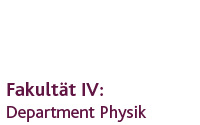DAPHNE4NFDI
In the National Research Data Infrastructure (NFDI), valuable data sets from science and research are systematically catalogued, networked, and made usable in a sustainable and qualitative manner for the entire German science system. To date, they have mostly been available on a decentralized, project-related or temporary basis. The NFDI is intended to create a permanent digital knowledge repository as an indispensable prerequisite for new research questions, findings, and innovations.
Relevant data should be made available in accordance with the FAIR principles (Findable, Accessible, Interoperable and Reusable). NFDI consortia are associations of various institutions within a field of research that work closely together on an interdisciplinary basis to realise the objectives. The non-profit organization National Research Data Infrastructure (NFDI) e.V., based in Karlsruhe, was founded to coordinate the activities involved in establishing a National Research Data Infrastructure. Together, the association and NFDI consortia are shaping the future of research data management in Germany. In addition, NFDI will also be linked to international initiatives such as the European Open Science Cloud (EOSC) and contribute to their development.
Prof Gutt from the Chair of X-ray Physics is one of the co-spokespersons of the NFDI consortium DAPHNE4NFDI , which represents the users of photon and neutron scattering. Photon and neutron scattering is used in very different scientific fields. The users face the common challenge of coping with the increasing demand for rapid data analysis. This requires efficient research data management.
The committees Research with Synchrotron Radiation and Research with Neutrons have been working together for years as representatives of this user community and are facing up to the challenges of digital transformation. The DAPHNE4NFDI consortium represents the broad spectrum of users of synchrotron and neutron technologies with more than 5,500 researchers in Germany. DAPHNE4NFDI also has links with the scientific fields of solid-state physics, molecular/atomic physics, protein crystallography, chemistry, catalysis and others.
The experiments produce more than 50-100 PB of data per year. Depending on the configuration, individual experiments generate millions of files, in some cases up to 3 PB per week. Current technical developments are influencing this user community both in terms of coping with rapidly increasing data volumes and increasing data rates - e.g. because of the higher brilliance of the sources (free-electron lasers, new storage rings and neutron sources) or faster and larger detectors of the latest design. DAPHNE4NFDI brings together universities, users, and operators of large-scale research facilities for photon and neutron research in a new way.
To meet the challenges of data and metadata management and high data rates, solutions for outstanding scientific experiments are being developed together with the user community. To this end, DAPHNE is developing the following infrastructure:
1. Improve metadata collection through consistent workflows supported by user-driven online logbooks linked to data collection, enabling more comprehensive collection of information about the experiments than is currently possible.
2. Establish a shared repository of processed data, new reference databases and analysis code for published results, linked where possible to the raw data sources, to improve access to research data in a sustainable way and enable the re-use of data and software.
3. Development, maintenance, and deployment of user-developed analysis software on the institutions' infrastructure so that ordinary users can benefit from the analyses performed by leading user groups and replicate them via common data analysis portals.
The consortium thus aims to create a national research data infrastructure along a process chain that extends from the proposal through the experiment to the recorded, stored, analyzed and interpreted data. This is a very ambitious endeavor. But the consortium is already building on the strong experience with the IT centers at the large-scale facilities, many activities in data analysis, data catalogues and repositories at the universities and research institutes and the development of metadata standards and quality control. DAPHNE4NDFI aims to bundle all these activities. Therefore, the DAPHNE4NFDI consortium consists of experts from the photon (KFS) and neutron community (KFN), experts from the various scientific fields and techniques (diffraction, spectroscopy, imaging, etc.) at universities, research institutes and large-scale facilities and is in close dialogue with users and scientists at large-scale facilities as well as with other NFDI consortia.
DAPHNE4NFDI - use cases
We are currently working on the following use cases for DAPHNE4NFDI
Data repositories for
XPCS data
Magnetic scattering data
SAXS data

